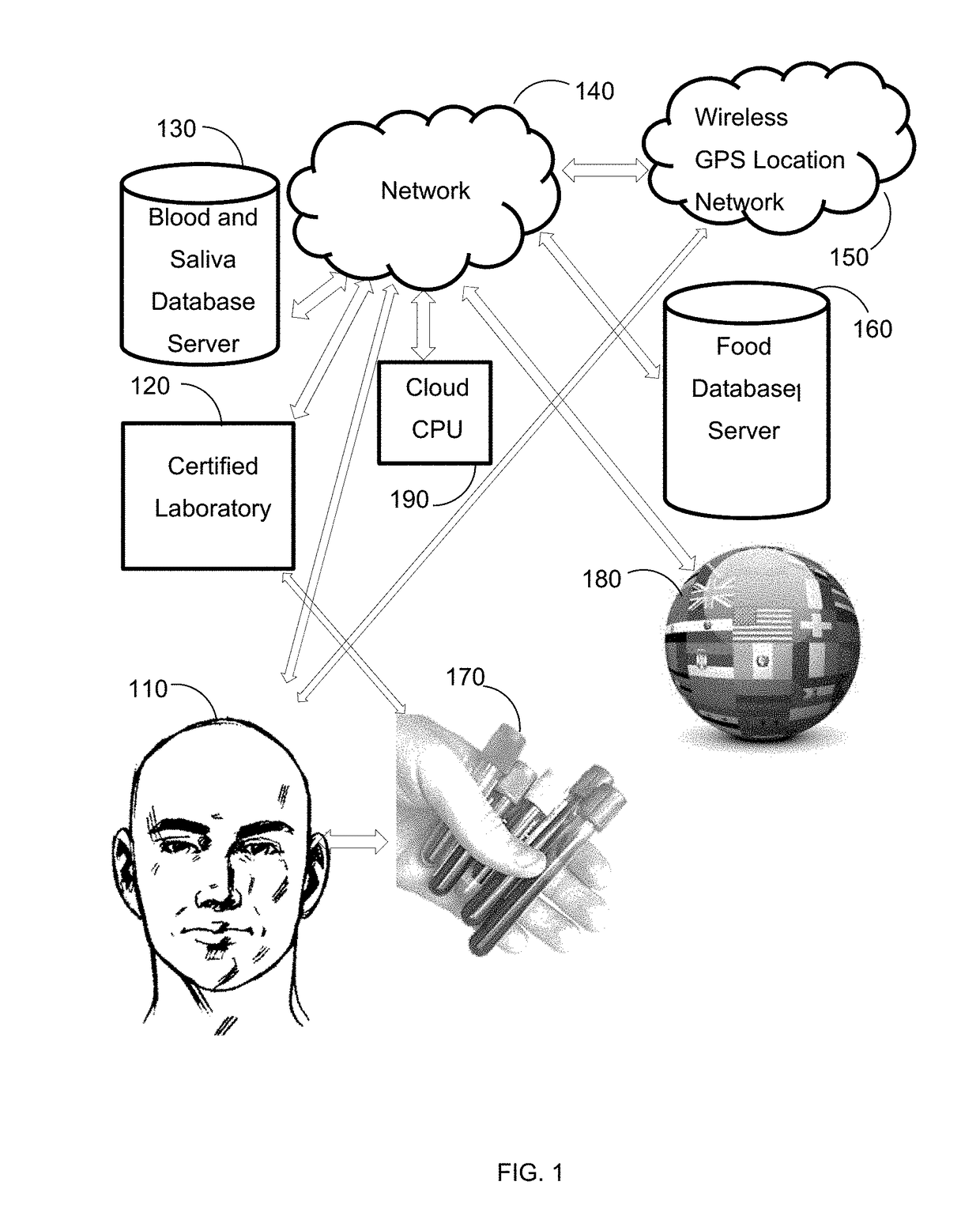Blood and saliva biomarker optimized food consumption and delivery with artificial intelligence
a biomarker and food consumption technology, applied in the field of blood and saliva biomarker optimized food consumption and delivery with artificial intelligence, can solve the problems of reducing the application range and use of the solution, and reducing the application value of the solution
- Summary
- Abstract
- Description
- Claims
- Application Information
AI Technical Summary
Benefits of technology
Problems solved by technology
Method used
Image
Examples
Embodiment Construction
[0053]The discussion below is directed to certain specific implementations. It is to be understood that the discussion below is only for the purpose of enabling a person with ordinary skill in the art to make and use any subject matter defined now or later by the patent “claims” found in any issued patent herein.
[0054]The following paragraphs provide a brief summary of various techniques described herein such as illustrated as in FIG. 1. For the purpose of efficiency in this document we will interchangeably use the term “User” and “Foodie”. In one implementation as illustrated in FIG. 1, a user 110 may provide a blood and saliva sample 170 to a certified laboratory 120 through a plurality of options. The certified laboratory then transmits the test results from the blood and saliva samples to a network 140 which then archives the data in a blood and saliva database same server 130. The network 140 also interacts with the user 110 and a food database server 160 which has compiled a p...
PUM
 Login to View More
Login to View More Abstract
Description
Claims
Application Information
 Login to View More
Login to View More - R&D
- Intellectual Property
- Life Sciences
- Materials
- Tech Scout
- Unparalleled Data Quality
- Higher Quality Content
- 60% Fewer Hallucinations
Browse by: Latest US Patents, China's latest patents, Technical Efficacy Thesaurus, Application Domain, Technology Topic, Popular Technical Reports.
© 2025 PatSnap. All rights reserved.Legal|Privacy policy|Modern Slavery Act Transparency Statement|Sitemap|About US| Contact US: help@patsnap.com



